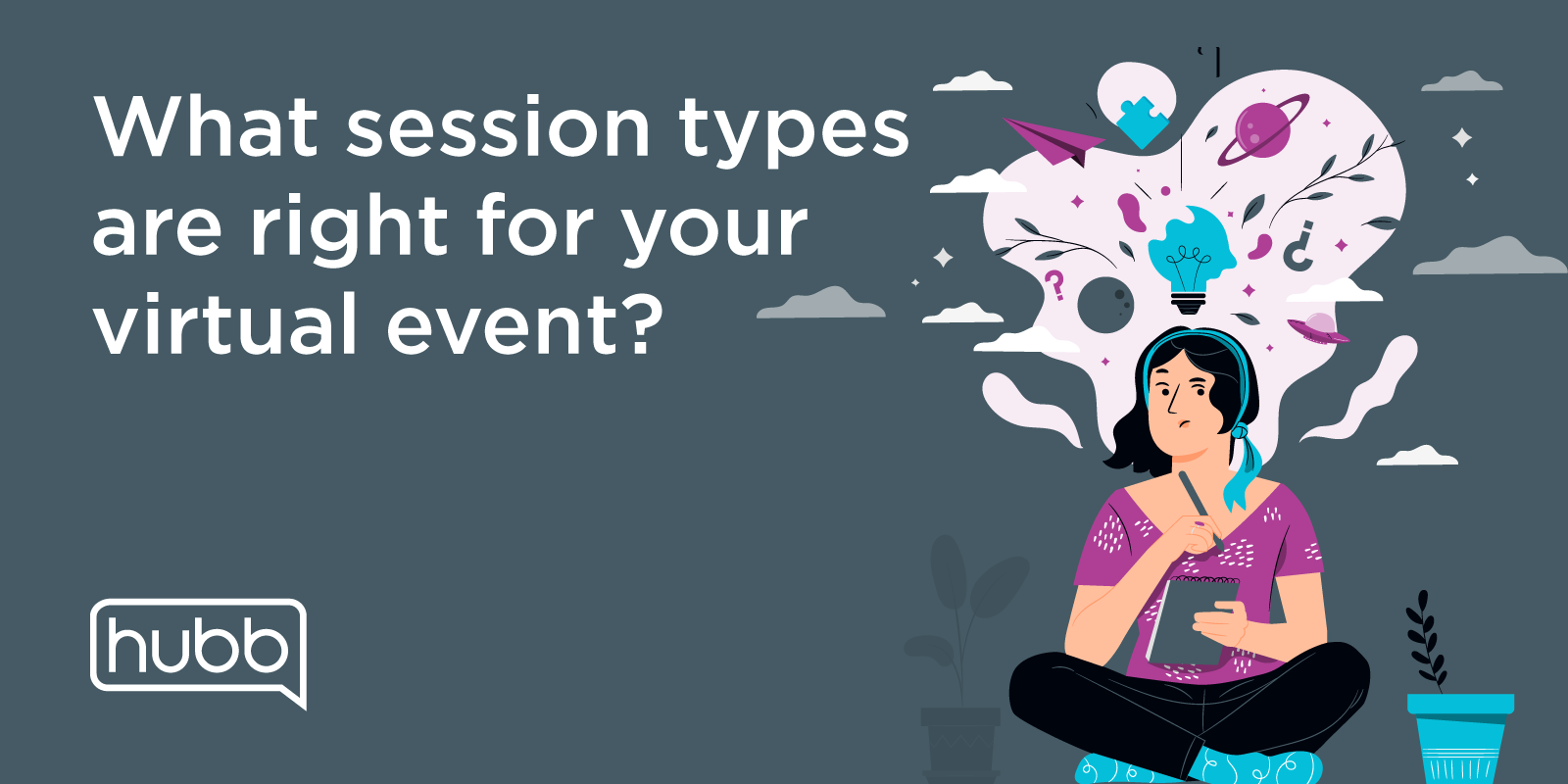
Determining the right session content is at the heart of conference planning and key to producing a successful event. At some point, while discussion rages about what to put in the box lunches or how many strobe lights to use at the dinner banquet, someone eventually pipes up and asks, “How will we connect with people and deliver a valuable experience to them?”
Because we all have decades of evidence about what works at a live event compared to months of experience building virtual ones, the conversation often starts with debate about live versus pre-recorded sessions. For a virtual event, unless your speakers will adapt what they’re saying to instant polling or Q&A in the chat window, does it really matter if any given session is live or not?
Most conference planners I know are not terribly tolerant of risk. So for the same reason we do not serve pork tartar at an awards banquet, absent a compelling reason to conduct a session live, I prefer to pre-record them. There is less risk of barking dogs interrupting the presentation or a bumped camera revealing the speaker has no pants, so I can focus on what is really important: Creating the most engaging sessions possible.
Sessions should enable participants to be heard.
Every one of us inherently wants to be recognized. We want to be seen, to interact. At a live session on site, that interaction usually only happens during Q&A at the end when there is only time for a fraction of participants to ask questions. If the content is pre-recorded for a virtual event, the speaker can be live with the audience, chatting and actually interacting with them during the show. This creates better engagement, more immersion into the content, and greater relevance to the audience who feels acknowledged by the presenter.
Think about how many times you’ve listened to a speaker and had a question about something they said. It bugs you, takes you out of the moment, and can make it harder for you to immerse in the content. In a virtual setting, we don’t have to relegate questions to their traditional space at the end of the show. You can ask your question immediately, and the speaker is available to answer you immediately. This real time Q&A during the presentation substantially improves session engagement in a virtual setting.
Audience and event size matter in this discussion. For smaller events with sessions that have a couple dozen participants, the traditional format with a live speaker can work fine. But if you’ve got 500 people sitting through a presentation where only five get to ask questions at the end, that’s unfair to the other 495 attendees. I prefer my speakers to be able to interact with participants all the way through a session, listening to and engaging with more of their audience.
When it comes to session formats, variety is the spice of life.
Having just issued a full-throated endorsement of pre-recording, it’s important to consider that every session is different, and so is every speaker. Having a mix of live and pre-recorded sessions can provide your audience with more variety and help you get the most from your content presenters. By hour five on day three, if everything looks and feels the same, attendees will start zoning out on you. Keep your options open with respect to session format and try to give your audience different types of experiences as they go from session to session. Be creative. There is no one type of session that works for every event or every speaker skill set.
If a speaker is really dynamic and skilled, the session will be more engaging. But some have nothing important to say, the charisma of a volleyball, or a mortician’s speaking style. Your job is to find ways to make them more engaging. Consider making these speakers part of live panels, so the discussion keeps moving and the audience doesn’t lose interest.
It’s up to you and your content team to be really good at judging the speaker’s content quality and skillsets and then understanding how to create the right environment for each.
Opportunities for socialization create engagement.
With virtual events, there is no opportunity to meet in the lounge at the end of the day and socialize, so we work a little harder to get people to really interact. Things like virtual cocktail parties and yoga can be fun, and you should try to find ways for people to open up and co-create with their fellow participants during them.
If you create social events virtually, the most important component is encouraging people to share what they’re thinking, what they’re feeling. If it is an event centered around food and drink, have a prominent chef or mixologist prepare something for the group. And give participants chances to share their favorite cocktails or recipes, create polls about favorite foods so others can share their opinions, and even challenge them to cook something themselves to show the group. This gets people feeding off of each other’s energy and that’s the point of a social experience.
So whether we’re talking about keynote speakers, breakout sessions, or opportunities for participants to socialize, every session should be formatted based on how to best connect with and engage those in attendance. Beginning the meeting planning by trying to decide between live or pre-recorded sessions can pigeonhole your entire event plan. Give yourself the opportunity to provide a variety of session types, multiple ways to engage, and above all, focus on ways for participants to share with each other and be heard.
 Allie Magyar
Allie Magyar
Founder and CEO
Hubb

